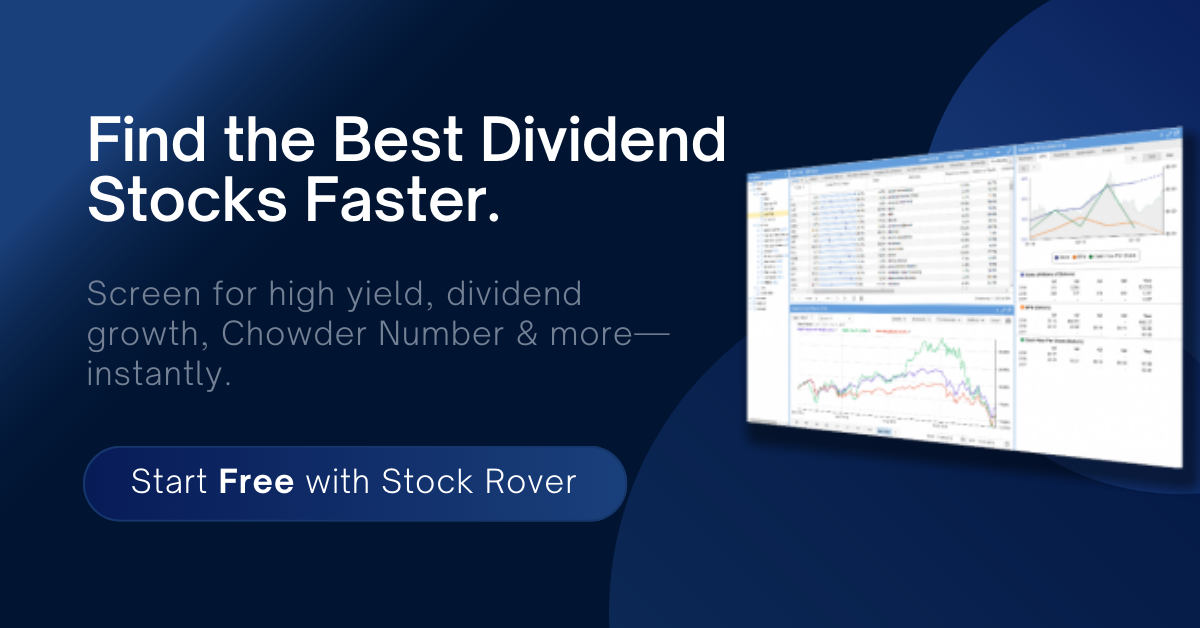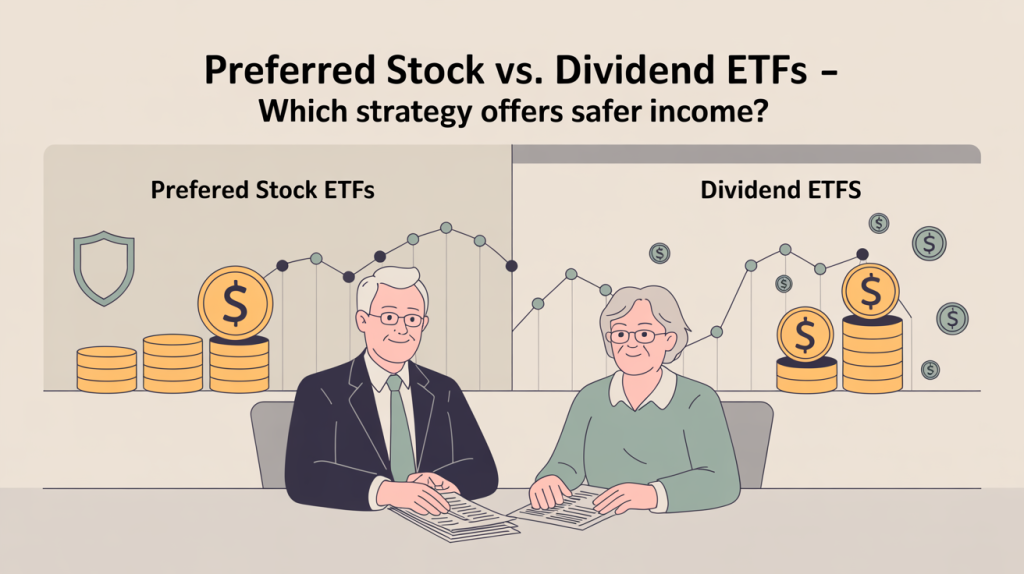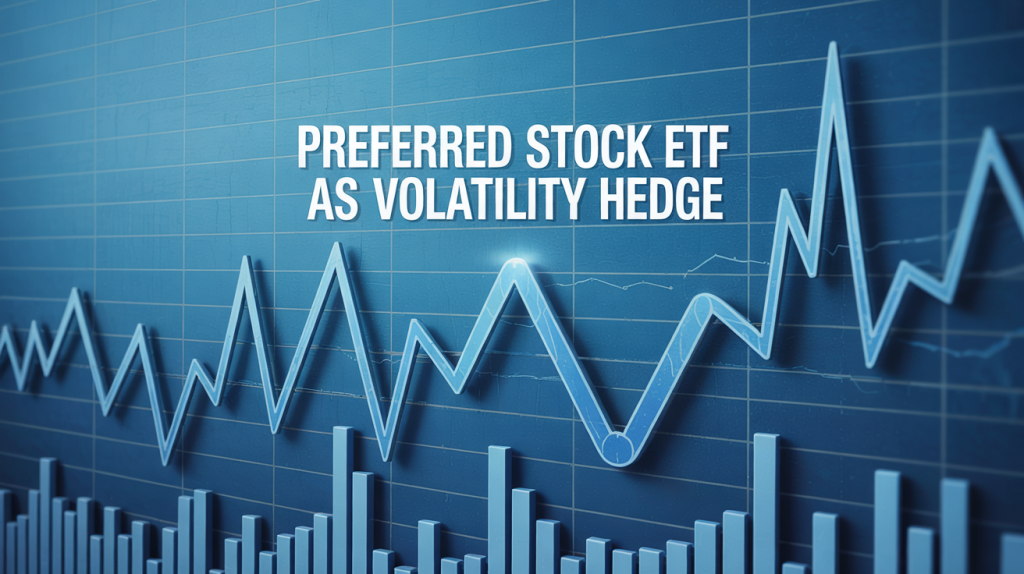
Volatility is the one guest at your investing table that never fails to show up uninvited. It rattles your nerves, distorts valuations, and tests your resolve. But as a value investor, you don’t need to fear volatility — you need to understand how to use it. One tool often overlooked in this regard is the preferred stock ETF. It doesn’t get the fanfare of growth stocks or the cult following of crypto, but it offers something far more dependable in turbulent markets: stability, yield, and strategic positioning. In this article, you’ll learn how to harness preferred stock ETFs as a hedge — not a silver bullet, but a smart lever — in a portfolio designed to compound wealth with consistency.
Why Volatility Demands a Defensive Playbook
Market volatility isn’t random. It’s driven by fear, uncertainty, and the realization that most investors have no clue what anything is worth. It hits hardest when valuations have lost touch with fundamentals — which, let’s be honest, happens more often than we’d like to admit.
As a result, equity-heavy portfolios often whipsaw in response to every Fed announcement, war headline, or inflation surprise. And while traditional hedges like Treasuries or gold still have their place, they aren’t always sufficient — or available at the right price. This is where a preferred stock ETF steps in.
What Is a Preferred Stock ETF — and Why It Matters Right Now
A preferred stock ETF bundles a basket of preferred shares — hybrid securities that sit between bonds and common equity. They typically offer fixed or adjustable dividend payments and rank higher in the capital structure than common stock, but lower than debt.
What makes preferred stock ETFs relevant now is the combination of reliable income and relative price stability, especially during equity drawdowns. Most preferred shares don’t fluctuate as wildly as common stocks, and the income they produce can act as ballast when the market feels rudderless.
How Preferred Stock ETFs Perform in Down Markets
During sharp equity corrections, preferred stock ETFs often hold their ground better than the broader market. This isn’t because they’re immune to losses — they’re not — but because their pricing is driven more by interest rate expectations and credit quality than pure market sentiment.
In 2020, during the COVID crash, preferred ETFs like PFF (iShares Preferred and Income Securities ETF) fell far less than SPY and recovered faster once the panic subsided. In 2022, when bonds and stocks both sold off, preferreds were hit too — but their high yield continued to provide income and attract investors once the dust settled.
That’s the key: a preferred stock ETF won’t eliminate losses, but it can blunt the impact, provide ongoing yield, and reduce the psychological impulse to sell everything in a panic.
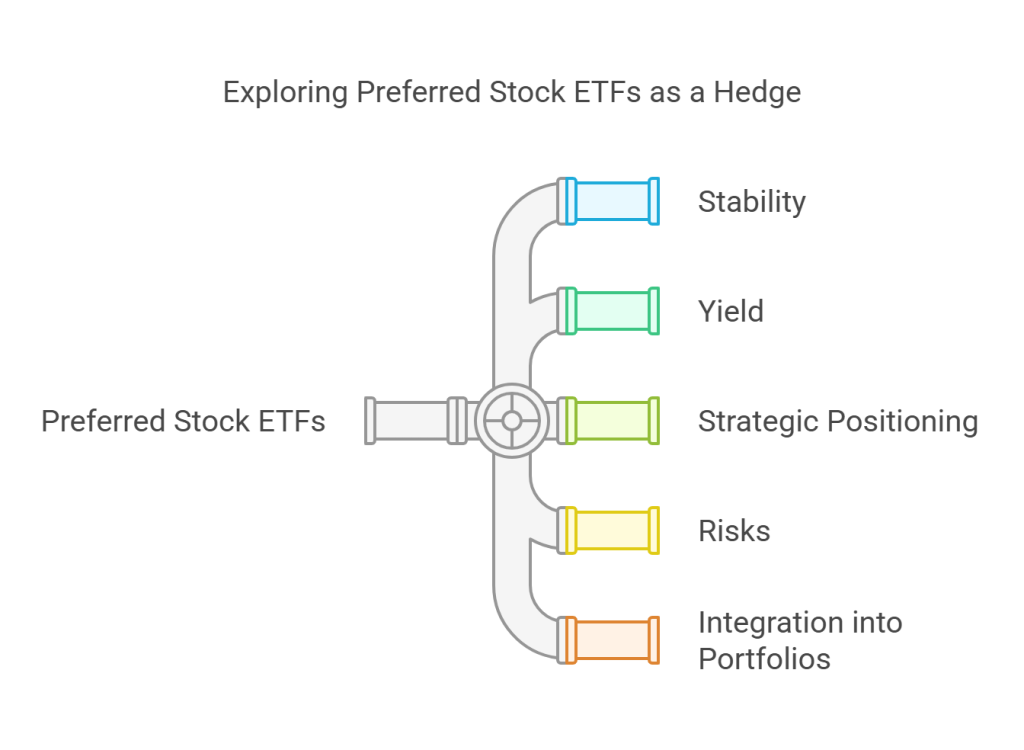
Why Yield Matters More Than Ever in Your Hedge Strategy
The Fed’s tightening cycle has changed the game. Cash now pays again, which means every asset in your portfolio competes with risk-free T-bills. If your equity portfolio isn’t delivering income — and your bonds are barely keeping up with inflation — preferred stock ETFs offer a way to plug that gap without chasing risk.
The typical preferred stock ETF yields between 5% and 7%, depending on credit quality, interest rate exposure, and structure. These yields are not promotional — they’re paid regularly and supported by corporate balance sheets. For a hedge to work, it needs to reward you while you wait. Preferred ETFs do exactly that.
One fund worth mentioning is PFFA (Virtus InfraCap U.S. Preferred Stock ETF). This actively managed fund adds modest leverage to enhance yield, often paying above 9% in many market conditions. I include it in my Income Factory portfolio as a high-yield diversifier that complements other cash flow generators like bank loan funds and covered call ETFs.
How to Integrate Preferred Stock ETFs Into a Value-Oriented Portfolio
If you run a concentrated portfolio of small-cap value stocks like I do, volatility is a feature — not a bug. But that doesn’t mean you shouldn’t buffer your downside.
You can allocate 10%–20% of your non-core capital to a preferred stock ETF as a source of monthly or quarterly cash flow. This income can then be used to either buy more undervalued stocks when prices dip or fund lifestyle expenses during lean quarters.
Preferred ETFs work especially well in IRAs and other tax-deferred accounts because much of the income is treated as qualified dividends. This creates tax efficiency, which adds another layer of resilience to your portfolio when you need it most.
Risks You Need to Understand Before You Buy
No investment is risk-free, and preferred stock ETFs carry their own baggage. Most funds are heavy in financial sector preferreds — think big banks, insurers, and asset managers. If the financial system comes under stress, these ETFs will feel it.
They’re also sensitive to interest rate changes. Rising rates can pressure prices, though this is often offset by the opportunity to reinvest dividends at higher yields over time.
Finally, liquidity can be an issue during extreme market stress. While ETFs are generally more liquid than individual preferreds, bid-ask spreads can widen, and prices may disconnect from net asset value temporarily.
Choosing the Right Preferred Stock ETF for Stability and Income
All preferred ETFs are not created equal. Some tilt toward fixed-rate issues, others toward floating or rate-reset structures. Some are actively managed, while others passively track indices. For most investors seeking a balance of income and risk management, a broad-market ETF like PFF or PGX may offer the right mix.
If you want to go deeper, look for funds with:
- Diversified sector exposure beyond just financials
- Holdings with investment-grade ratings
- Expense ratios below 0.5%
- Consistent dividend history
Always review the underlying holdings and sector weightings before committing capital. You’re not just buying a ticker — you’re buying a strategy.
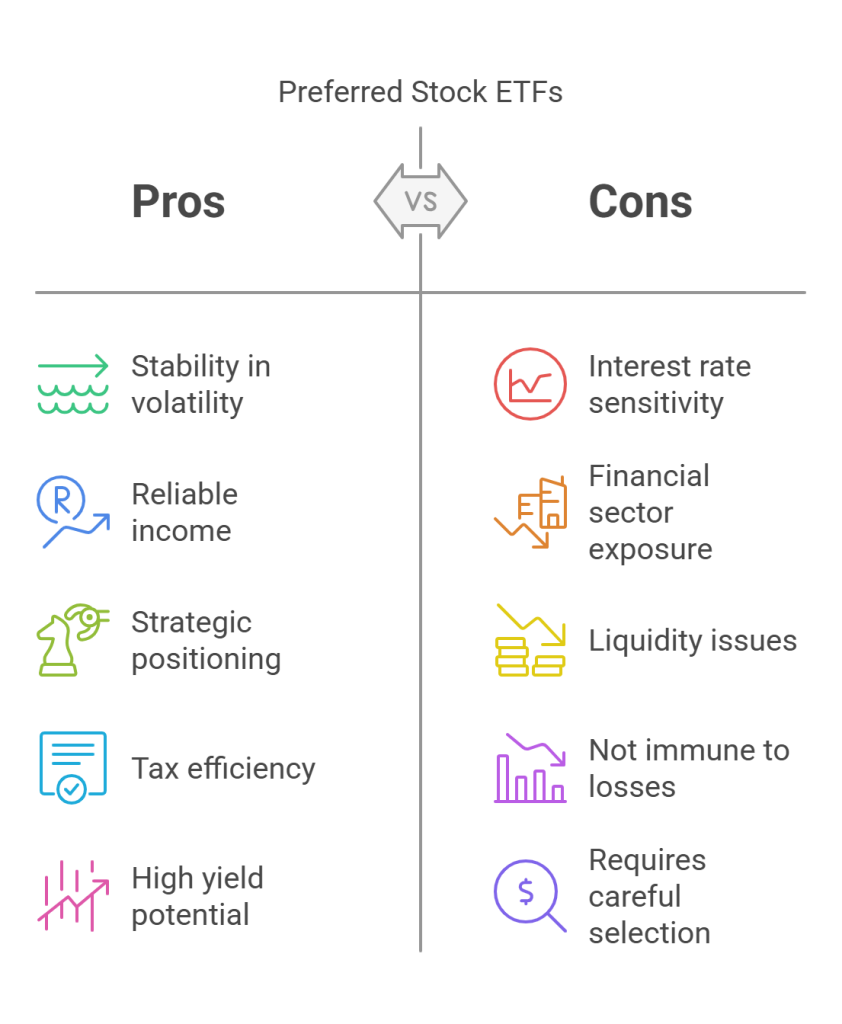
Final Thoughts: Preferred Stock ETFs Are a Hedge, Not a Savior
You don’t buy a preferred stock ETF expecting explosive returns. You buy it to create a layer of cushion, a reliable income stream, and a calmer experience during market storms.
The best hedges are the ones you’re happy to hold even if the market doesn’t crash. And that’s where preferred stock ETFs shine. They pay you to wait, protect you when others panic, and give you optionality when markets overreact.
If you’re building a value-centered portfolio for long-term compounding, a preferred stock ETF is a worthy addition to your defensive playbook. Just make sure you’re using it strategically — not blindly.

Shailesh Kumar, MBA is the founder of Astute Investor’s Calculus, where he shares high-conviction small-cap value ideas, stock reports, and investing strategies.
His work has been featured in the New York Times and profiled on Wikipedia. He previously ran Value Stock Guide, one of the earliest value investing platforms online.
Subscribe to the Inner Circle to access premium stock reports and strategy insights.
Featured in:


